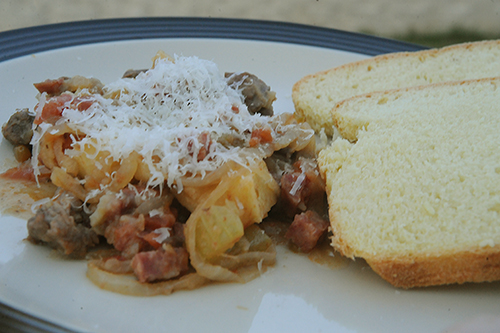 |
So that's why we appear to be going backwards this week--because as I arrived at Italy I had to question my decision not to split it up into regions. I mean, I split Canada of all places into regions, why wouldn't I do Italy? So we are temporarily all the way back at the B's with Basilicata, Italy.
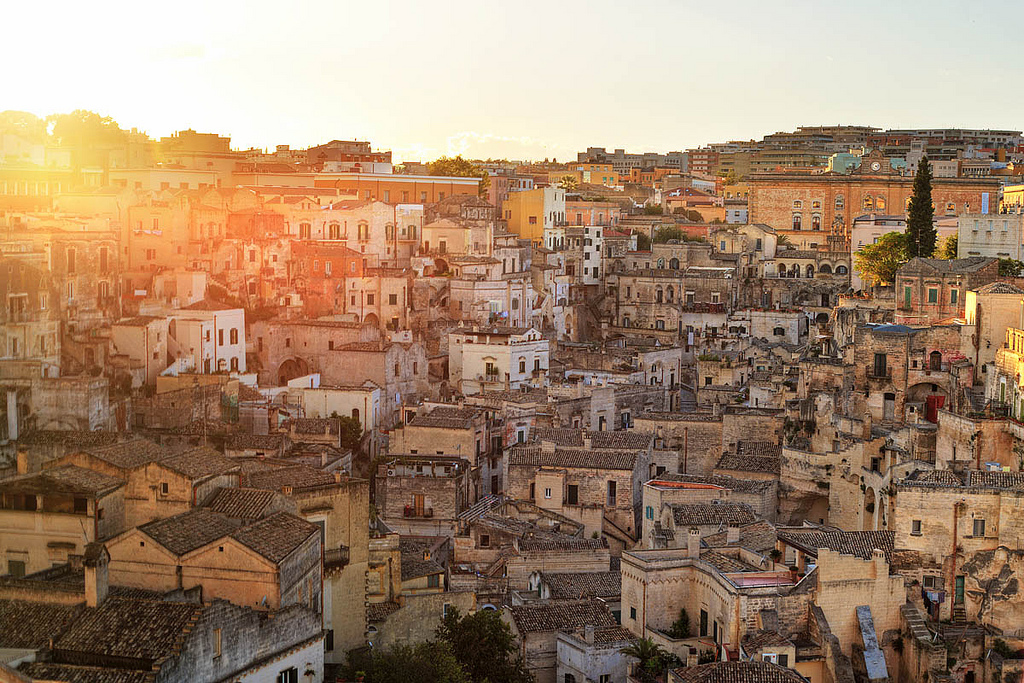 |
| Matera, Basilicata, Italy. Photo by Luca Moglia. |
Basilicata is a southern region of Italy. It's the instep of the boot, which will make sense to you if you can picture a map of Italy. It has two coastlines, high, rocky mountains and lousy soil, which means that it's not good for agriculture and was mostly poor for a very large part of it history. Some inhabitants, in fact, wondered at the point of sticking around and left when things got particularly bad in the 1900s. Today Basilicata has a small population of around 600,000 people, which makes it one of the most sparsely-populated regions in Italy.
Pecora alla Materana (Sheep Stew with Pecorino and Salami)
(from The Italian Taste)
- 1 lb sheep meat*
- 1 2/3 cup white vinegar
- 1 2/3 cup water
- 7 oz onions, finely-sliced
- 7 oz firm, ripe tomatoes, peeled and cubed
- 1 3/4 oz soppressata, chopped fine
- 1 celery stalk, sliced
- 1 hot chili pepper
- 1 oz pecorino cheese, grated
- 7 oz potatoes, peeled and diced
- 1 1/2 tbsp extra virgin olive oil
- Salt to taste
For an appetizer, I chose a dish that's a little more elegant:
Cavatelli Rucola e Olive (Cavatelli with Arugula and Olives)
(also from The Italian Taste)
- 1 3/4 lb fresh cavatelli pasta
- 3 1/2 oz pitted black olives (I used kalamatas)
- 10 1/2 oz arugula
- 2 garlic cloves
- 3 1/2 oz pecorino cheese, grated
- 8 tbsp extra virgin olive oil
- Chili pepper
- Salt
Cavatelli Pasta
(from Domestic Fits)
- 2 cups double-zero flour
- 1 cup semolina flour
- 1 cup warm water
- 1/2 tsp salt
Bread of Matera
(from Pasticciando con Magica Nana)
- 3 1/2 cups durum wheat semolina
- 1 2/3 cup water
- 1 1 /4 tsp active dry yeast
- 1 3 /4 tsp salt
Now sift the semolina with the salt and mix with the remaining water. Add the yeast mixture and knead (or use your bread machine) until you have a nice, smooth dough. Transfer to a lightly floured bowl and cover with plastic wrap. Let rise in a warm place for two hours.
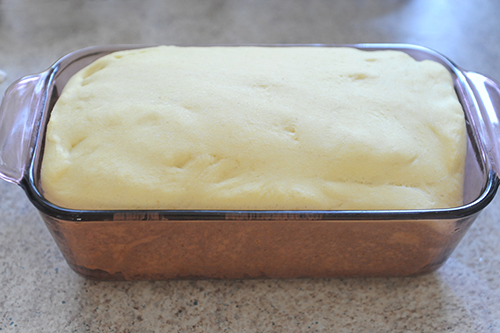 |
Now make the fresh pasta. Here’s how:
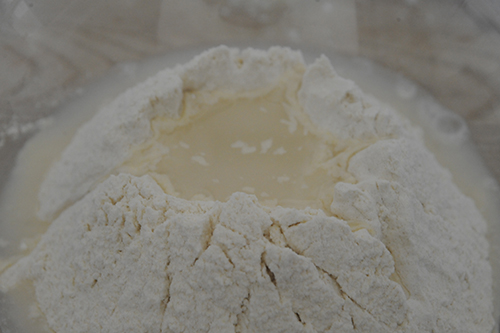 |
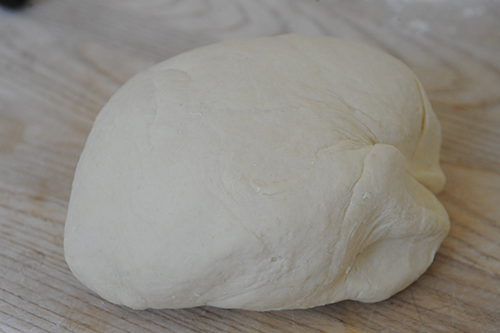 |
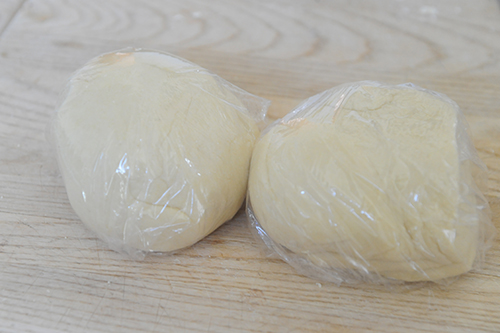 |
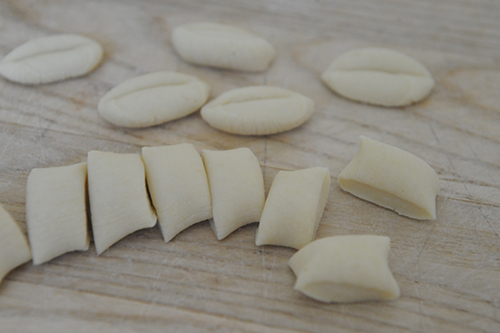 |
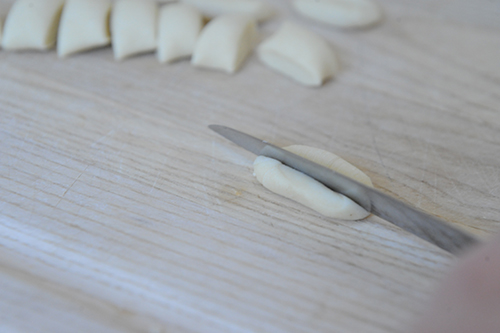 |
Meanwhile, start on the stew. First cut all the fat off the meat. Don’t skip this step, or your husband will moan about how he doesn’t like lamb and he thinks his food is booby-trapped. Now cut the meat into bite-sized pieces and transfer to a bowl with the white vinegar and some water. Let marinate for 30 minutes.
 |
Take the meat out of the bowl and pat dry, then transfer to the pot with the onions. Brown the meat and then add the tomatoes, celery, salami and chili pepper. Cover with hot water and add a little salt. Put the lid on ajar and simmer over low heat for two hours, or until the meat is tender (you probably don’t need to cook as long for lamb as you would for mutton).
About 30 minutes before you’re ready to serve, add the potatoes. Sprinkle with grated pecorino and serve.
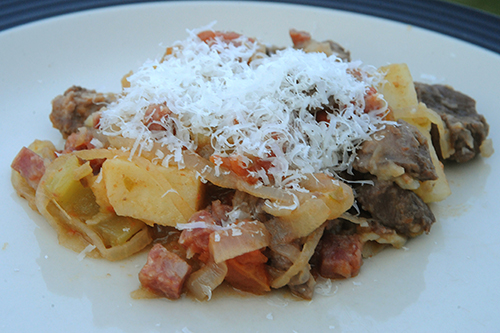 |
First saute the olives, garlic and chili pepper in a little bit of olive oil. Add the arugula and let it wilt just a little bit, then toss with the cooked/drained pasta. Grate the pecorino over and serve.
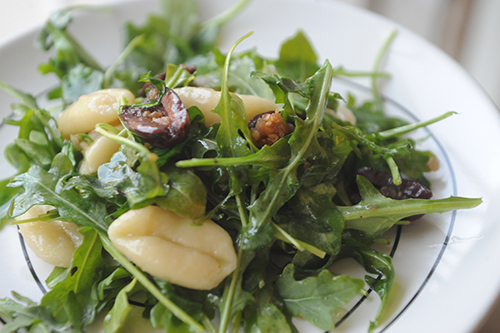 |
The stew went over about as well as I thought it was going to, which was not very well at all. The lamb was quite tender but it wasn’t enough to make my poor, long-suffering husband enjoy it. I tried to make him eat it for leftovers but instead he found a leftover piece of chicken schnitizel (from last week!) and ate that instead, so that’s about as much as he loved the lamb. I thought it was good, but it wasn’t really anything special.
The bread was very tasty. It had a nice color and it was very crusty, which is a good quality in a bread. It didn’t keep very well though and by the next day the leftovers were pretty stale. I ate them anyway.
I do feel like I’ve conquered the whole Italian food problem, starting with this entry, but I’ve got a long way to go before I cover the whole of Italy. I won’t be doing it all in consecutive weeks, of course, but stay tuned.
Next week: Jamaica!











0 comments:
Post a Comment